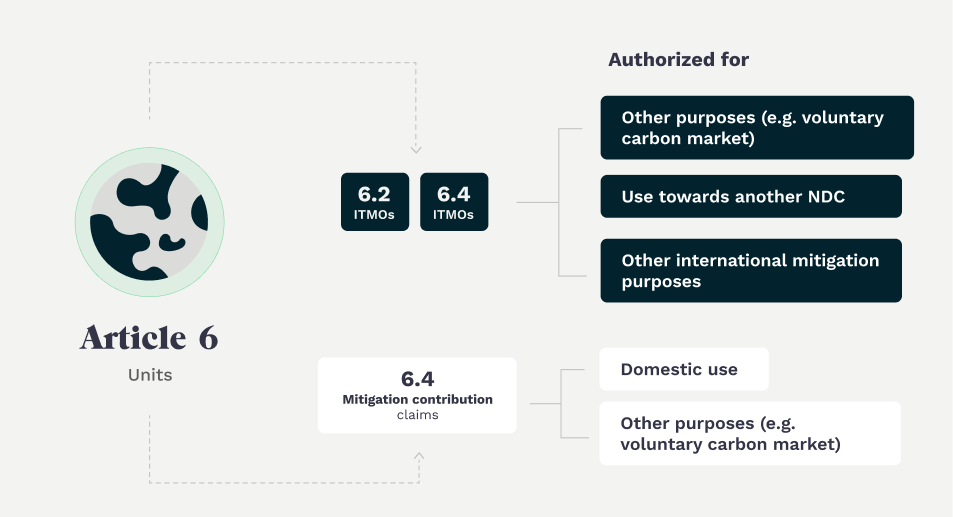How does AI help reduce the carbon footprint of organizations?
It's true that Artificial Intelligence (AI) is helping to increase the overall volume of data stored and exchanged around the world, while at the same time requiring ever greater computing power and thus contributing to the growing environmental impact of digital technology. Nevertheless, providing these rebound effects can be controlled, AI is also emerging as a crucial tool for achieving sustainable development goals. Faced with climate change emergency, AI can help companies to reduce their carbon footprint. Capable of analyzing massive volumes of data, optimizing processes, and automating many tasks, AI offers unprecedented ways of accelerating the decarbonization of organizations.
Rethinking production systems and business models with AI
To reduce their costs and environmental impact, some companies have, for example, implemented energy efficiency measures such as improved lighting and heating systems, heat recovery, or investment in more energy-efficient equipment. However, despite their relevance, these initiatives face significant limitations, whether in terms of impact, cost, feasibility or sustainability, and are not sufficient on their own to meet the complex environmental and economic challenges facing businesses.
Artificial Intelligence, with its ability to analyze and simultaneously process a large number of variables, offers a promising path for rethinking production systems and business models, as indicated by Gilles Babinet, co-president of the National Digital Council and member of the National Committee for Generative Artificial Intelligence.
Reducing emissions through intelligent trade-offs
AI enables complex, dynamic trade-offs to be made immediately, which is essential for more sustainable resource management.
In the energy sector, for example, the intermittency of renewable energy poses a major challenge in balancing consumption and production at any given moment. AI enables real-time analysis of energy flows and prediction of supply and demand, helping to improve the overall efficiency of the energy system and reduce the carbon intensity of the electricity mix.
In the logistics sector, optimizing load rates or routes is a perfect illustration of AI's potential. Indeed, the low load factor of delivery trucks in cities, often below 15%, shows that there is considerable scope for improvement. By optimizing the distribution and use of resources, AI can contribute to a significant reduction in transport-related CO₂ emissions.
It's ability to adapt to various sectors and operate at multiple scales is fundamental for achieving the objectives of the National Low Carbon Strategy (SNBC) and for complying with European ambitions to reduce the carbon footprint. However, transitioning to broader adoption requires companies to invest time and resources, a commitment we have actively made at ClimateSeed.
How AI is revolutionizing carbon footprinting at ClimateSeed?
At ClimateSeed, we support our customers on their decarbonization trajectory, in particular through our tool GEMS (GHG Emissions Management Software), which enables organizations to measure and reduce their carbon footprint.
What's special about our tool? We have integrated AI, which provides accuracy, speed of execution, and complete automation of the greenhouse gas (GHG) emissions estimation process. Let us explain:
AI at the heart of one of our key features: bulk data import and classification
One of the challenges in measuring organizational carbon footprint lies in the handling of purchases of goods and services. Companies often face a significant amount of data, which is moreover unstructured.
Two options are then possible: manually processing the information, which is generally long and tedious, or resorting to the monetary approach (i.e., using financial information such as invoices or amounts spent to estimate a quantity of GHG), allowing for a quick but degraded estimation of the footprint. This second method is generally favored by companies; however, the uncertainty associated with this approach is high and does not allow for sufficient granularity of results, sometimes preventing the implementation of relevant reduction actions.
At ClimateSeed, we have developed a feature that enables processing large quantities of information without sacrificing quality. Indeed, it is possible to import your data in bulk into our software, and our artificial intelligence algorithm then enables rapid and automated processing, regardless of the nature of your purchases. This algorithm interprets your purchase lines and associates each with the most appropriate emission factor, thereby significantly improving the reliability and relevance of the information we provide.
The benefits of integrating AI into our GEMS platform
Integrating artificial intelligence into our tool offers many advantages to our users.
Enhancement of accuracy through a preferred physical approach: Our algorithm favors a physical approach, based on the quantities purchased rather than a monetary approach, based on expenditures. This method ensures unparalleled precision tailored to the physical reality of activities and goods consumed. This is made possible thanks to a vast database of emission factors (Base Empreinte®, DEFRA, IEA, EcoInvent, Boavizta, Agribalyse, etc.).
A high level of granularity for result analysis: In addition to increasing the accuracy of calculations, the physical approach allows for a finer granularity in the results. With a monetary approach, emissions are aggregated into broad categories, and the notion of what has been purchased is often lost. As a result, it becomes impossible to determine within these categories what constitutes a significant portion of emissions. With our feature, it is possible to delve into the hierarchy, precisely identify significant items, and prioritize reduction actions accordingly.
Reduction in processing time: The algorithm was designed with a focus on reducing the time required for the adequate classification of purchases. This is proven by a rapid analysis of your data, thereby reducing the time you invest in calculating your carbon footprint.
Transparency on methodology and results: Once purchases are processed by the algorithm, the user has access to the classification made for each line, potential error status, a confidence score, and associated greenhouse gas (GHG) emissions. Thus, they can prioritize the correction of any potential errors and improve prediction as part of an iterative process.
A comprehensive approach: The universal algorithm developed by ClimateSeed is designed to evaluate all types of data, regardless of the company's sector of activity, whether it involves the purchase of goods, capital assets, or services, thus offering unparalleled flexibility. This makes the tool relevant for a wide range of companies looking to calculate their carbon footprint thoroughly.
Interview with Julien, Data Scientist at ClimateSeed
What's your background?
My name is Julien and I'm a Data Scientist (or rather, a data science engineer). After completing a preparatory course in advanced mathematics, I pursued my studies at Polytechnique, focusing on Mathematics and Data Science, followed by a year of specialization at the National University of Singapore (NUS) where I worked on Bayesian neural networks as part of my master's thesis.
How long have you been working at ClimateSeed and what are your main missions?
I've been working at ClimateSeed for a year and a half, and my primary mission revolves around integrating AI into ClimateSeed's digital platform, the GEMS (GHG Emissions Management Software).
In your opinion, is the integration of AI a revolution in the carbon footprinting of a company?
In my opinion, integrating AI is undoubtedly a significant advancement in conducting a company's carbon footprint assessment. Although databases exist, they are often sporadic and usually limited to a specific theme. The strength of our solution lies in its universality, flexibility, and the speed of processing it enables.
What advice would you give to companies looking to use AI for their decarbonization strategy?
The main advice I could give them would be to organize and store their data as rigorously, comprehensively, and accurately as possible. In the era of artificial intelligence, information is a treasure that needs to be carefully handled. High-quality data, once analyzed, often allows for the identification of many areas for improvement, the refinement of strategies such as those for reducing GHG emissions, the rethinking of many processes, and more.
In other words, for a company, having quality information is a guarantee of greater transparency, a better capacity for self-reflection, and without a doubt, a serious competitive advantage.
Conclusion
Artificial Intelligence is becoming an essential partner for companies wishing to reduce their carbon footprint. By enabling more efficient and sustainable resource management, AI contributes directly to accelerating decarbonization efforts. It is now up to economic players to seize this opportunity, by fully integrating AI into their environmental strategies, to work together towards a more sustainable future.
Sources :
https://kpmg.com/fr/fr/home/media/press-releases/2023/11/barometre-transformation-industrielle.html
https://news.un.org/fr/story/2023/11/1140337#:~:text=Lanc%C3%A9%20par%20le%20Secr%C3%A9taire%20g%C3%A9n%C3%A9ral,d'ici%20la%20fin%202027
https://www.hubinstitute.com/articles/gilles-babinet-le-numerique-est-il-lavenir-de-lecologie
Share this
You May Also Like
These Related Stories

CSRD: the European directive on corporate sustainability reporting

COP28: Carbon Market Takeaways


